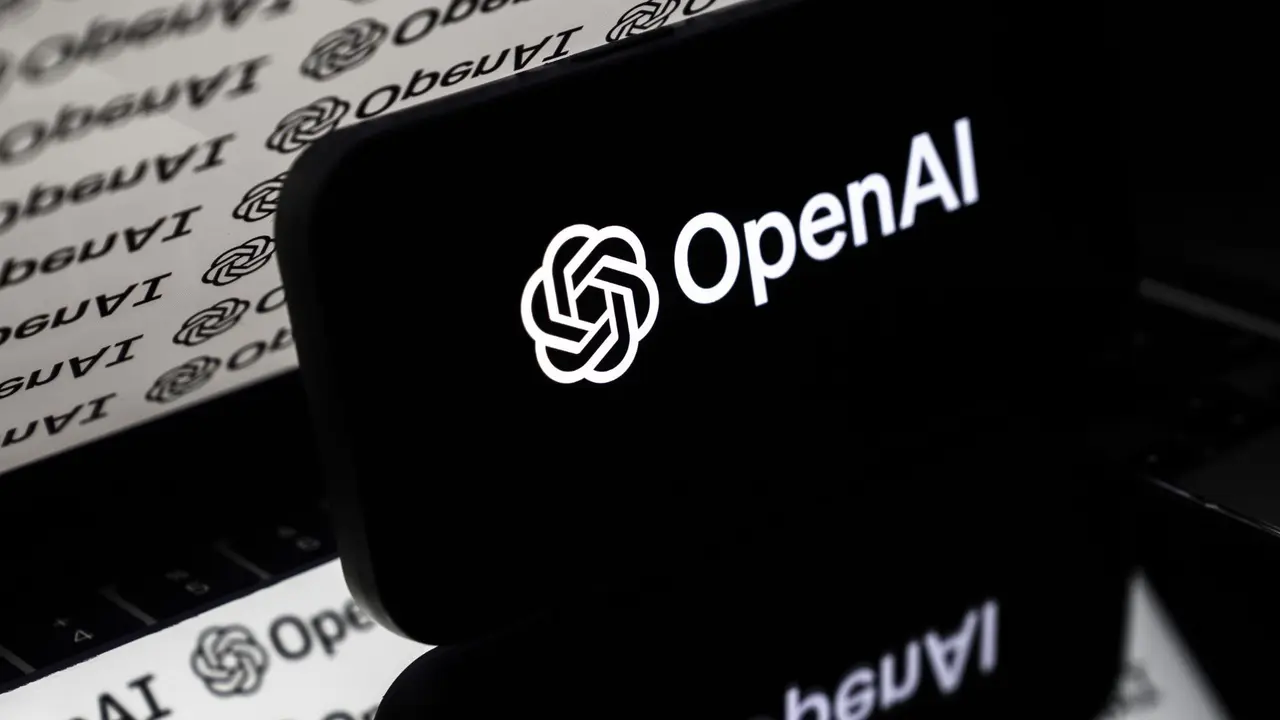AI Revolutionizes Credit Risk Models in Fintech and Banking
2 Sources
2 Sources
[1]
AI in Fintech: Revolutionising Credit Risk Models: By Katherine Chan
Having spent over 2 decades in banking and financial services, I have seen how financial models evolve, but never at the speed seen today. AI is reshaping credit risk assessment, offering a more effective approach to evaluating businesses that operate outside conventional frameworks. SMEs, particularly digital-first companies, have long faced barriers when seeking funding, as traditional risk models rely on historical financials and fixed criteria that fail to capture their real potential. The AI world is moving fast. This month, China's DeepSeek unveiled the R1 AI model-developed at a fraction of the cost of its Western counterparts but showing similar capability. Some analysts called it an American AI "Sputnik moment," emphasizing the pressing need for financial institutions to change. Meanwhile, Meta and Microsoft continue to show more commitment to AI, reflecting the scale of investment in this technology. These developments show how AI is enforcing competition in industries, financial services included. Early in my career, I worked within traditional banking structures that built risk models on static financials and long approval cycles. I saw businesses with strong customer traction and growing revenue streams struggle to secure financing because they didn't fit into a predefined mold. Later, working directly with SMEs, I saw that frustration from the other side-founding teams trying to navigate a system not designed for them. AI-driven lending flips that equation. Risk assessments can now keep pace with real-world business performance, presenting founders with superior access to the capital they most need. And the shift's already happening-with those who'd embrace it already defining the face of SME financing. For years, banks have evaluated creditworthiness using inflexible models built on historical financial statements, credit scores, and collateral. These models were designed for businesses with predictable revenue, tangible assets, and long trading histories. While this approach may have worked in the past, it no longer reflects the realities of modern SMEs-particularly digital-first companies operating in e-commerce, SaaS, and service-based industries. Indeed, many banks, according to HSBC's Access to Finance report, re-evaluated their lending criteria in the post-financial crisis era, reviewed expected losses, and decreased SME lending. In fact, this change has caused many SMEs to struggle in securing finance despite good financial fundamentals. I've watched time and time again through my years in banking where otherwise viable businesses couldn't get funding simply because they failed to pass some arbitrary checklist threshold. The founder operating a high-growth, online brand with thousands of repeat customers is denied outright simply because the business was only trading 2 years, while another at much lower growth may have property collateral and could sail through an approval process. These models very often punish companies with good fundamentals but unconventional structures. Banks rely on a limited set of financial indicators to assess credit risk. These include: These factors create unnecessary barriers for SMEs, forcing many to rely on alternative funding sources, often at higher costs. Beyond flawed assessment criteria, traditional lending is slow: underwriting can take weeks or even months, requiring heavy paperwork, manual verifications, and requests for more information over and over. Most SMEs lack the time and resources to go through this process and still manage a business day-to-day. The consequences of such inefficiencies are evident. Whereas 5 years ago, 40% of SMEs relied on banks for both business accounts and lending, today only 20% do so. It is not a question of convenience but one of frustration with a system not serving the needs of modern businesses. Lending models must race to keep pace with the speed at which SMEs are moving. AI-driven risk assessment offers a way forward in allowing lenders to base their decisions on the actual financial activity of a business, rather than outdated benchmarks. Traditional lending models rely solely on financial statements, credit scores, and collaterals to dictate creditworthiness. While such a system is standard practice in the industry and has been applied for decades, it fails in the capturing of the true real-time state of many companies' finances. AI introduces diversity in the manner of evaluation, considering actual running financial operations, customer behaviors, and market trends, hence allowing lenders to paint a much-accurate picture of the enterprise's health. Open finance frameworks, which will be more aimed at increasing access to SME credit data, accelerate this shift toward AI-driven risk assessment. According to HSBC's Access to Finance report of 2024, one implication of increased availability of credit data among SMEs-as contemplated under the SBEE Act-will be that challenger banks and alternative lenders can increase their lending capabilities. That means fintech players using AI can offer financing on real financial data against outdated credit scoring models. Traditional lending decisions depend on past performance, which does not always reflect a company's ability to manage future growth. AI-driven credit models analyse: This means that instead of solely depending on the past performance, if lenders can use data representing a business's current financial position, then the funding provided can be in tandem with the company's actual needs, reducing unnecessary credit rejections. HSBC's Access to Finance report also corroborates this shift: with increased access to SME credit data, lenders can look beyond static credit files to dynamically assess real-time financial health. Traditional risk assessments apply standardized formulas that segment companies into broad profiles of risk, while AI models learn from the thousands of data points that each can identify against a pattern to be missed if underwriting was manual. This enables: Deloitte highlights that AI improves the accuracy of credit decisions by predicting default risk more effectively. This leads to better lending outcomes for both businesses and lenders. Manual underwriting requires weeks of document reviews, approvals, and compliance checks. AI automates large parts of this process, allowing lenders to: With the power of AI-driven credit models, delays are reduced and terms are more flexible, making access to finance easier for those businesses that might otherwise struggle with traditional lenders. HSBC's Access to Finance report of 2024 highlights the fact that already, challenger banks and fintech lenders using AI-driven assessments have increased SME lending volumes, with more businesses being able to access finance without being penalized because of limited credit histories. AI-driven credit assessments are making funding more accessible to SMEs by shifting the focus from rigid financial metrics to real-time business performance. This approach allows lenders to offer financing solutions that better suit modern business models. Many SMEs struggle to secure funding because they lack a long credit history or traditional assets. AI enables lenders to assess businesses based on real-world performance rather than outdated benchmarks. This approach benefits companies that: By incorporating data from transaction records, customer activity, and market trends, AI allows lenders to evaluate businesses more accurately. EY's report on embedded finance and AI states that AI enhances trust in credit scoring, making funding more reliable for businesses that would otherwise struggle to qualify. Traditional lending often imposes fixed repayment schedules that do not align with the way SMEs generate revenue. AI allows lenders to offer repayment structures that adjust based on financial activity. Some of the most effective models include: These flexible structures reduce the burden on SMEs, allowing them to invest in growth without being locked into rigid loan conditions. AI reduces the need for lengthy document reviews and manual approvals, allowing businesses to receive funding much faster than through traditional methods. AI-driven systems: By streamlining decision-making, AI enables businesses to access capital when they need it, rather than losing opportunities due to delays in funding approval. AI redefines how financial institutions assess risks, moving away from outdated models that are based on fixed criteria. By analyzing real-time business activity, AI lets lenders make more accurate credit decisions and expands the access of SMEs to funding. In other words, businesses that would have struggled with traditional underwriting now have much better opportunities to secure financing. Financial institutions need to balance innovation with responsibility. Lenders adopting AI risk models will have to be far more transparent and less biased to retain the trust of people in automated decisions. A challenge remains-not only to strive for more accuracy but to create frameworks for lending that are fair and accountable. Key Takeaways:
[2]
How AI-Driven Model Selection is Revolutionizing Risk Assessment in Banking: By Shailendra Prajapati
The global banking sector is navigating unprecedented challenges volatile markets, evolving regulatory demands, and increasing customer expectations for speed and accuracy. Traditional risk assessment models rely on static historical data and struggle to keep pace with modern financial complexities. AI-driven model selection is reshaping risk management, allowing banks to assess risk with greater precision dynamically. According to McKinsey, financial institutions that leverage AI for risk assessment have reduced default rates by 20-30% and accelerated loan approvals by 40%. Meanwhile, regulators such as the European Central Bank (ECB) emphasize AI transparency under frameworks like DORA (Digital Operational Resilience Act) making responsible AI adoption more critical than ever. Modern risk assessment relies on powerful AI and ML tools: Leading banks are achieving measurable improvements in risk management using AI: To fully harness AI-driven model selection, banks must take a structured approach: Key Challenges: The next evolution in AI-driven risk assessment includes: Additionally, regulators are exploring probabilistic risk assessment models powered by Bayesian networks, shifting risk quantification from binary classifications to dynamic uncertainty models. AI-driven model selection is no longer optional it's a competitive necessity. Banks that fail to modernize risk assessment models face margin erosion, regulatory scrutiny, and increased exposure to financial losses. The path forward requires industry collaboration: As Citigroup CEO Jane Fraser recently stated: "AI is the new bedrock of risk management." The future of banking risk management belongs to those who embrace AI-driven innovation.
Share
Share
Copy Link
AI is transforming credit risk assessment in fintech and banking, offering more dynamic and accurate evaluations of businesses, particularly SMEs and digital-first companies. This shift promises to overcome limitations of traditional lending models and improve access to capital.

AI Reshaping Credit Risk Assessment in Financial Services
Artificial Intelligence (AI) is revolutionizing credit risk assessment in the fintech and banking sectors, offering a more effective approach to evaluating businesses that operate outside conventional frameworks. This transformation is particularly significant for Small and Medium-sized Enterprises (SMEs) and digital-first companies, which have long faced barriers when seeking funding due to traditional risk models' limitations
1
.Limitations of Traditional Lending Models
Traditional credit risk models rely heavily on historical financial statements, credit scores, and collateral. These models were designed for businesses with predictable revenue, tangible assets, and long trading histories. However, they fail to capture the real potential of modern SMEs, particularly those in e-commerce, SaaS, and service-based industries
1
.The consequences of these outdated models are evident:
- Viable businesses with unconventional structures often fail to secure funding.
- The underwriting process is slow, taking weeks or even months.
- Only 20% of SMEs now rely on banks for both business accounts and lending, down from 40% five years ago
1
.
AI-Driven Risk Assessment: A New Paradigm
AI-driven lending models are changing this landscape by basing decisions on the actual financial activity of a business, rather than outdated benchmarks. These models consider:
- Real-time cash flow data
- Customer acquisition and retention rates
- Market trends and industry-specific metrics
- Social media sentiment and online reviews
1
This approach allows for a more accurate picture of a company's financial health and growth potential. According to McKinsey, financial institutions leveraging AI for risk assessment have reduced default rates by 20-30% and accelerated loan approvals by 40%
2
.Implementation and Challenges
To fully harness AI-driven model selection, banks must take a structured approach:
- Data integration and cleansing
- Model development and validation
- Continuous monitoring and refinement
- Regulatory compliance and explainability
2
However, challenges remain, including data quality issues, model interpretability, and regulatory compliance. The European Central Bank (ECB) emphasizes AI transparency under frameworks like the Digital Operational Resilience Act (DORA), making responsible AI adoption critical
2
.Related Stories
Future Developments
The next evolution in AI-driven risk assessment includes:
- Quantum computing for complex scenario modeling
- Federated learning for privacy-preserving model training
- Explainable AI (XAI) for regulatory compliance
- Natural Language Processing (NLP) for unstructured data analysis
2
Additionally, regulators are exploring probabilistic risk assessment models powered by Bayesian networks, shifting risk quantification from binary classifications to dynamic uncertainty models
2
.Industry Collaboration and the Path Forward
The future of banking risk management belongs to those who embrace AI-driven innovation. As Citigroup CEO Jane Fraser stated, "AI is the new bedrock of risk management"
2
. The path forward requires industry collaboration, including:- Standardized data formats for seamless information sharing
- Open-source AI model libraries for risk assessment
- Cross-industry working groups on AI ethics and governance
- Partnerships between banks, fintechs, and regulators
2
As AI continues to reshape the financial landscape, it promises to create a more inclusive and efficient lending environment, particularly for SMEs and digital-first companies that have been underserved by traditional models.
References
Summarized by
Navi
[1]
Related Stories
AI Revolutionizes Banking: Enhancing Customer Experience and Risk Management
07 May 2025•Business and Economy

AI Revolutionizes Financial Institutions: From Experimentation to Transformation
11 Apr 2025•Business and Economy

The Impact of AI on Banking and Financial Services: Opportunities and Risks in ASEAN and Global Markets
16 Jul 2024

Recent Highlights
1
AI Chatbots Sway Voters More Effectively Than Traditional Political Ads, New Studies Reveal
Science and Research

2
Trump signs executive order to override state AI laws despite bipartisan pushback
Policy and Regulation

3
OpenAI warns upcoming AI models will likely pose high cybersecurity risk with zero-day exploits
Technology





